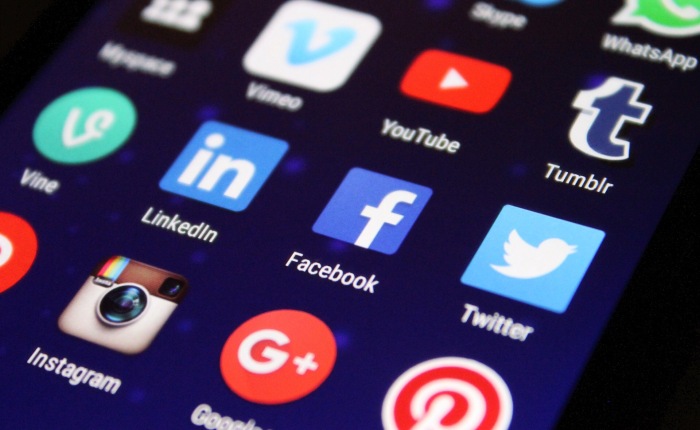SEO
“SEO stands for “search engine optimization.” It is the process of getting traffic from the “free,” “organic,” “editorial” or “natural” search results on search engines.
All major search engines such as Google, Bing and Yahoo have primary search results, where web pages and other content such as videos or local listings are shown and ranked based on what the search engine considers most relevant to users. Payment isn’t involved, as it is with paid search ads.”
(Search Engine Land, 2016)
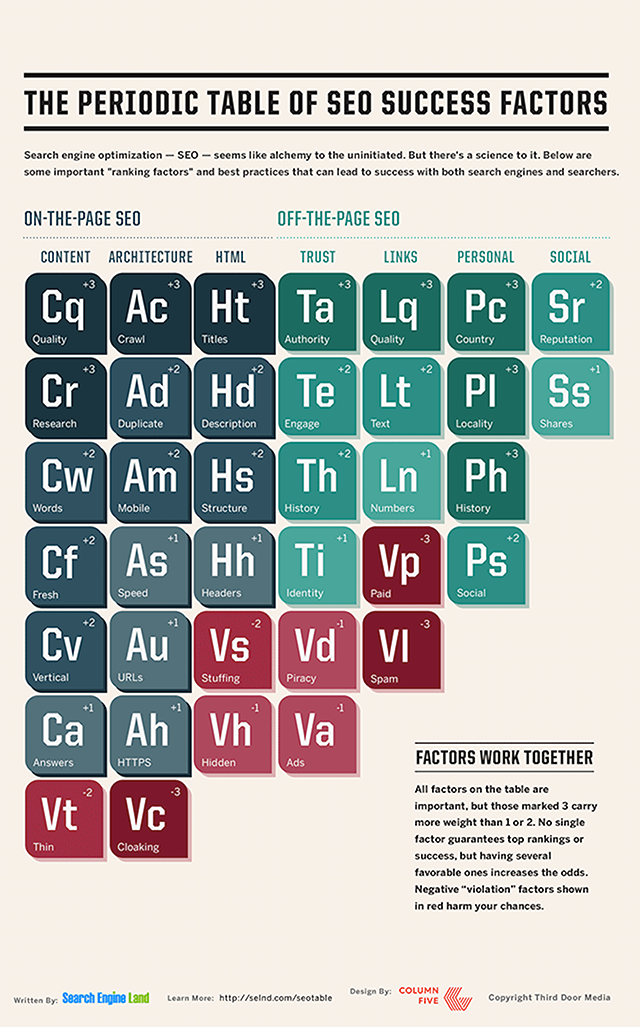
(Search Engine Land, 2016)
In order to optimize the website for search engines you should take a number of steps to improve SEO.
Key Word / Key Phrase Research
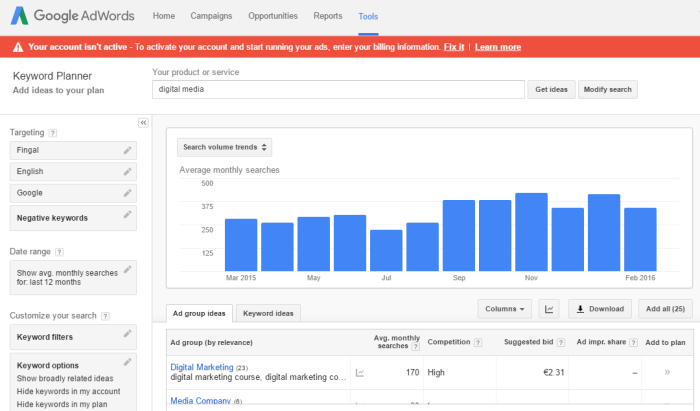
(Google Adwords, 2016)
Keywords and key phrase research is important for the site’s Title tags and Meta Description Tags.
For this we have conducted some keyword research using Google AdWords’ keyword planner.
We must be careful here to avoid keyword stuffing. Google penalizes sites that overdo the keywords in the title and meta description tags so best practice is to stick to the recommended length for each.
Title Tags
This is how a title tag looks in the HTML

(Kiss Metrics, 2016)
Each title tag should be between 60 and 80 characters. Google recommends 65.
To help with this we have used a title tag checker which is available online.
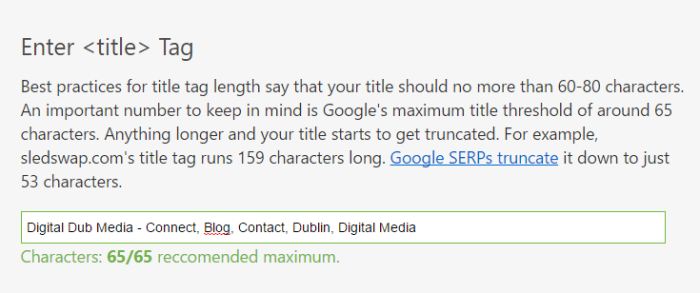 (ezlocal.com, 2016)
(ezlocal.com, 2016)
As can be seen from the image above our title tag for the Connect page is the perfect length of 65 characters for Google’s guidelines.
Any more or less than this and the page will not rank as well.
Meta Description Tags
This is how the Meta Description Tag looks in HTML
.
(kissmetrics.com, 2016)
While the Meta Description tag does not necessarily help with SEO rankings it is very helpful to users when viewing the SERPs as it displays a description of what your site is about.
This is how the Meta Description Tag looks in the SERP.
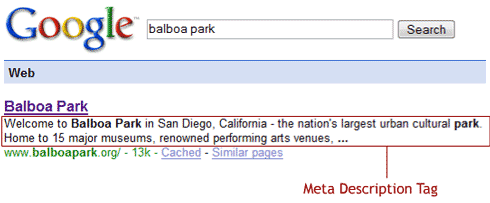
(Moz.com, 2016)
Using a free online Meta Description tag checker, we were able to optimize our Home page Meta Description tag.
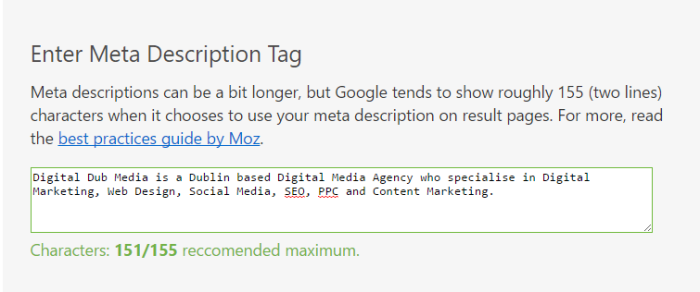
(Moz.com, 2016)
By keeping our Meta Description under 155 characters we can ensure that it doesn’t get shortened on the Search Engine Results Page (SERP) and the viewer can see the full description.
Headers
Headers can help a search engine spider navigate your page and find content but according to Google’s latest advice they only give a slight boost to SEO.
Headers are a way to include keywords but should be used sparingly with only one H1 header per page and a limited amount of words per tag to avoid stuffing.
Other elements on the page should use H2 and H3 headers at least but it is possible to use anything up to H6.
Image Name & Alt Tags
Alt tags are important for SEO. Each image used on your website should be given an alt tag.
The keywords used for these alt tags are important and should provide a good description of the image and use good keywords.
Here is an example of the use of an alt tag from a website’s HTML. The alt tag has been highlighted in red.
<a><img class=”mainimage” src=”images/devices.jpg” width=”100%”
height=”400″ alt=”Media Devices”></a><br>
This will help search engines find images for their image search based on the keywords used.
Links
Internal links should link every page on the website to each other and the best way to do this is by having a link to each page in the navigation bar which is contained in each page header. Use this method to link each page internally.
External links are links from your site to another domain and also from another domain to your site. Each link should be checked to make sure it isn’t broken as this can lead to a lowering of your site’s SEO rank.
Include a number of external links to sites which help to rank well including Google+, WordPress, Google Maps and a number of other social media sites.
We can set up external links from most of these back to our website and this helps the ranking more than links from the site to these other domains.
Content
Content is probably the most important element for our SEO as it allows us to optimize our website without having to rely on external links from other domains and can actually lead to the website content being shared and the creation of external links from other sources.
It’s important for content to use relevant keywords and phrases and have an appropriate keyword and key phrase density.
Content should also be fresh and use trending topics in order to boost page rank.
So here are examples of some of the suggested phrases and words we will use in order to improve our content.
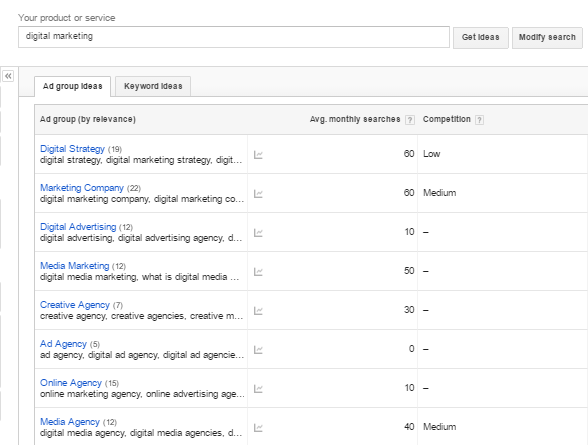
(google adwords, 2016)
It is important that the content is appealing and the use of keywords and phrases is not enough. Good quality content should engage the visitor and make them return to the site and share your content.
Social Media
While it’s still unclear as to how much Social Links affect SEO rankings it is still important to have them as for many visitors it might be a gateway to your website and lead to increased traffic, conversions, content sharing and external link building.
Google + is seen as one of the more important social media sites to link to and from.
Future Direction
It’s never a good idea to build a website and just sit back and relax. The best websites are constantly updated and this can have a number of benefits. In this section we have outlined under a number of headings the best strategy for how the website should be maintained and updated.
Layout
A fresh layout is important for a number of reasons. Firstly, the site should always look up to date and stay in touch with the latest UI design trends. Visitors to the site will be looking to see what kind of things are being done in media and for The Digital Dub the website is the best chance to make a great first impression.
Pages should be given a fresh new look on a regular basis. Once the site is optimized for mobile and tablet devices we should check how it looks on all platforms and devices regularly.
SEO & Content Review
It’s also important to constantly review SEO and Content on the website. For Digital Dub media our future plans include white hat link building from trusted and high ranking external sources, incorporating a blog page into the site, optimizing for mobile and tablet devices, optimize our URLs, Use HTTPS to ensure a safe connection for visitors, optimize our load speed for each page.
Our Blog is probably the most important aspect from a content perspective and if it’s fresh, relevant and interesting it should help drive traffic to the site and keep visitors engaged while improving the website ranking. It should also help with link building from other sources which also helps our SEO rank.
Website Promotion
Once the website goes live there are a number of ways we can promote it to drive awareness, traffic, engagement and return visits.
Obviously our SEO will be important for this as it can gain us good ranking in the organic search results.
There are however some more immediate and effective methods we can employ in order to get faster results.
We can promote the site on social media. The more channels we use and the more we engage our target market on social media the better change we have of them visiting our website. We need to share relevant content that will engage and give potential clients a sense of what we are about.
We can use an email marketing campaign to promote the website. Email marketing is still a relevant and highly effective way of promoting any business or product.
PPC, Display & Paid Social
Paid media is a very fast and efficient way of promoting any business or brand. You can experiment with each of these in future as a way to promote the website.
Here are some examples of the different types of paid media ads we can use.
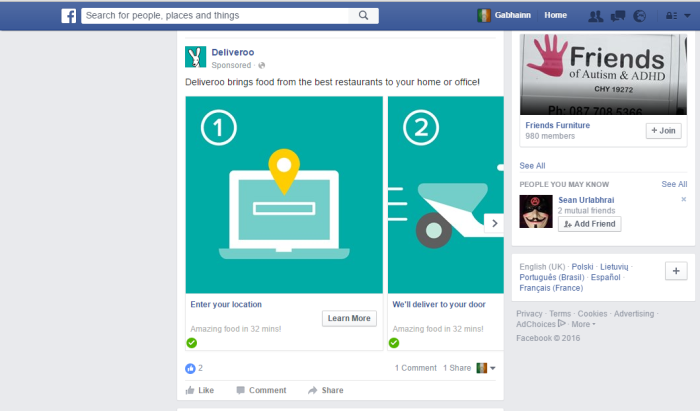
(Paid Social Ad) (Facebook.com, 2016)
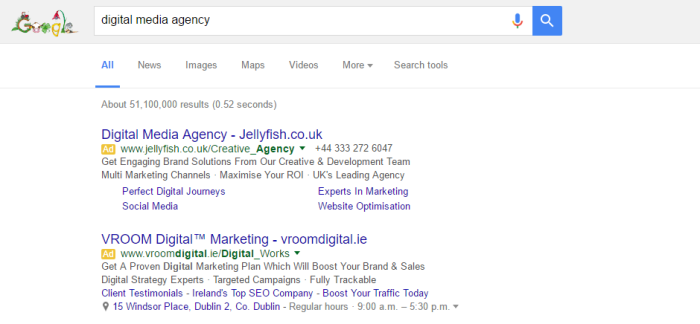
(PPC Ads) (google.ie, 2016)
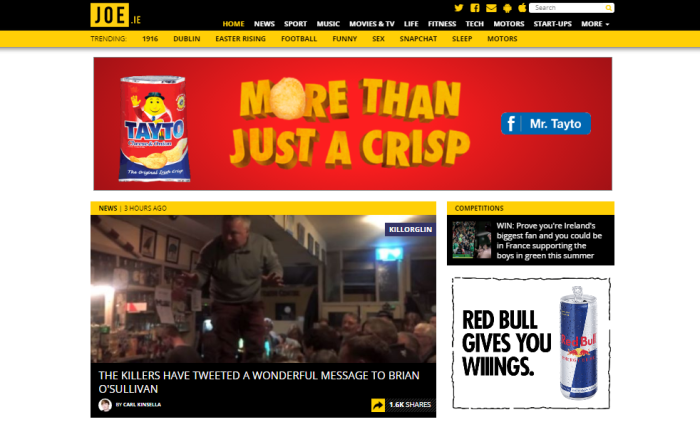
(Display Ads) (Joe.ie, 2016)
Analytics
For your website’s future plans Analytics are one of the most important factors to ensure the success of the website and we need to measure what needs to be added or changed and implement changes based on the findings.
Google Analytics is a great free tool that we can use to gain some great valuable insights.
We plan to set up a free account as soon as the website goes live.
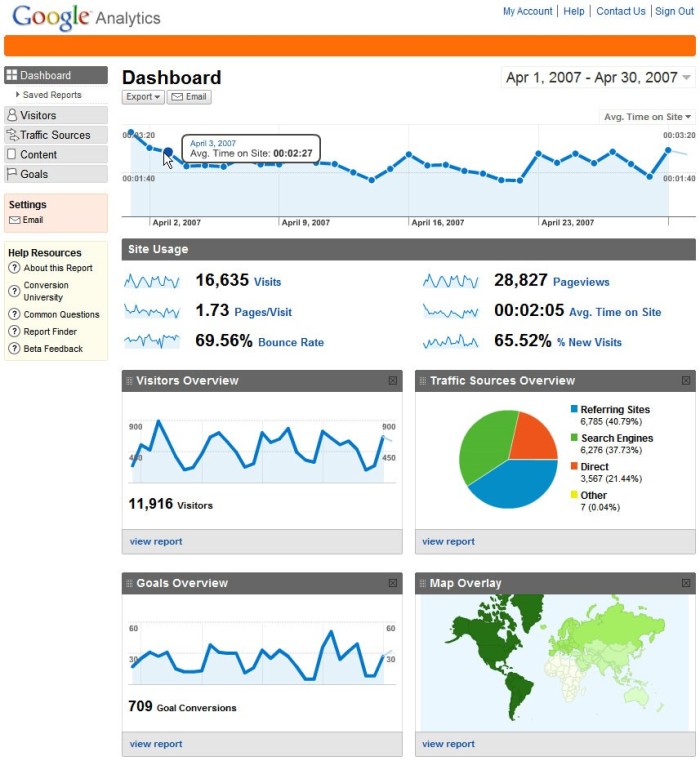
(Adventure Travel News, 2012)
Each account has three levels known as a properties and for our account The Digital Dub Media website will be our first “Property”
Our other properties will be The Digital Dub Blog page and the Mobile Version of the website.
We must ensure to include the GA tracking code into our HTML for each property we want to measure.
The most important things we plan to measure are as follows:
-
Site Traffic
Here we plan to measure both total visits and unique visits. Each metric will give us an insight into a variety of factors.
When measuring total visits, it can give us a chance to see if our promotion of the site is working.
If we run a certain campaign or create and promote a new blog post and we see a spike in traffic after this, it tells us that our efforts to drive traffic are working.
When we look at unique visits it can tell us if the same people are returning to the site numerous times. This should tell us if our content is good enough so that people want to visit the site numerous times as they find our content engaging.
-
Referrals
We plan to measure referrals in order to see where traffic to our website is coming from. This is a great way to gauge how successful each method of site promotion has been for us.
It will show us if traffic came from Organic search, Social Media, PPC, Display Ads, Paid Social, Mobile or Tablet devices, Blogs or from external links on other websites.
We will then decide if a certain method is working or if we need to step it up or drop it altogether.
We can also use this tool to help build relationships with other sources who are linking to our website and form an ongoing bond by returning the favor.
-
Bounce Rate & Exit Rate
Bounce rate is measured by the amount of visitors who leave before exploring the site. This should give us an idea of how well our home page or landing page is performing. If the bounce rate is high, we will need to improve things in order to engage visitors and give them a better UX.
Exit rate is measured by the amount of visitors exit at a certain point or page. If we find it is high at a certain point or page, we will need to work on that specific part of the website.
-
Conversions
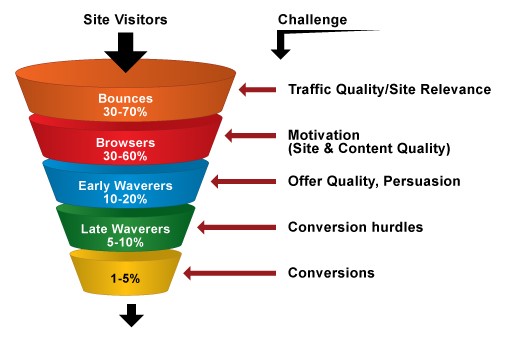
(Louis, 2016)
Our conversions will include sign up to our newsletter. Filling out the contact form, reading or visiting our blog, clicking on any of the links we have provided, visiting our social media pages from the site and use of internal links to navigate the site.
Measuring this will also tell us if we are engaging visitors and if we need to improve or amend any of our site’s CTAs.
Conclusion
Managing your website can be the difference between making it a success or fading away. I hope this guide helps you to get started on the road to the number 1 spot. The rules of content marketing, SEO, PPC and Analytics change all the time. It’s important to study each in more detail on a regular basis.

